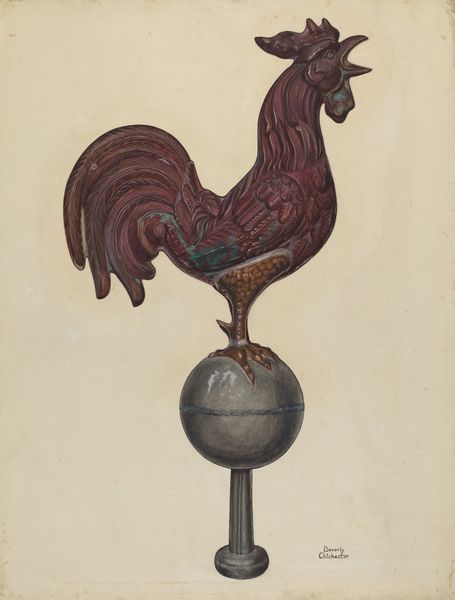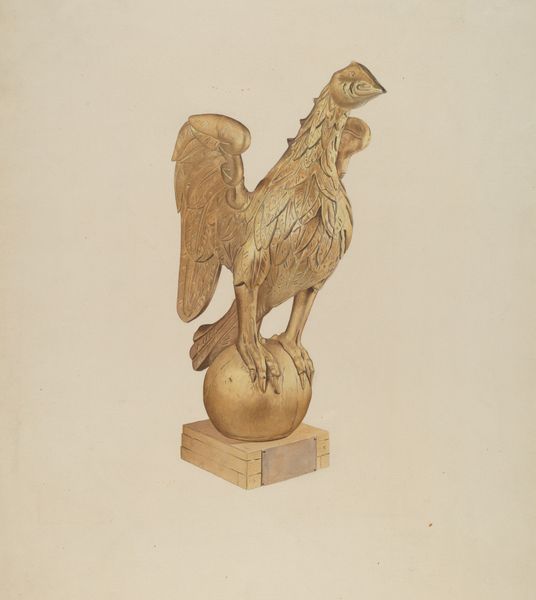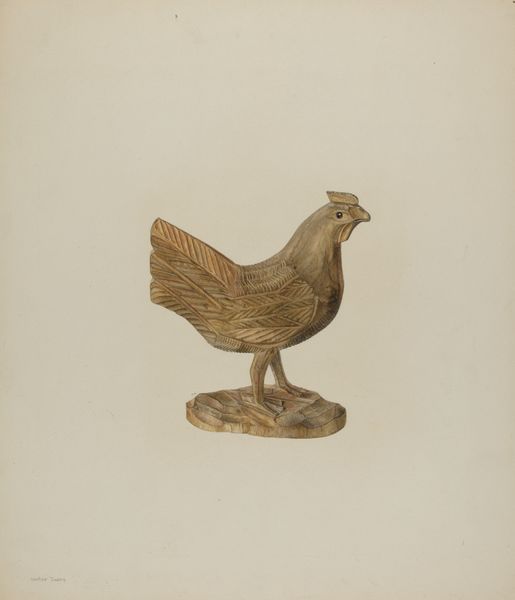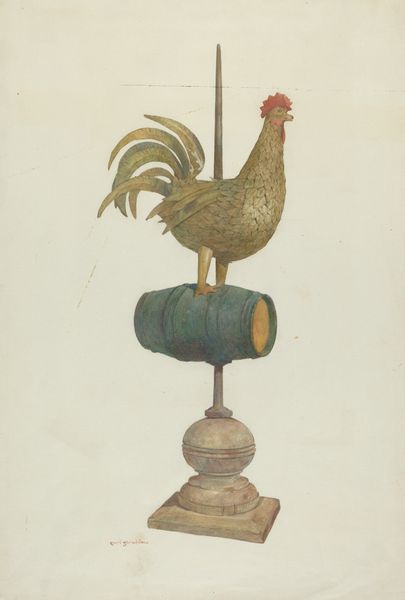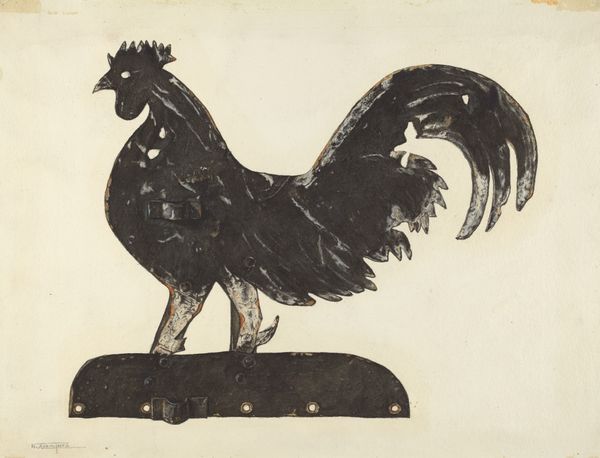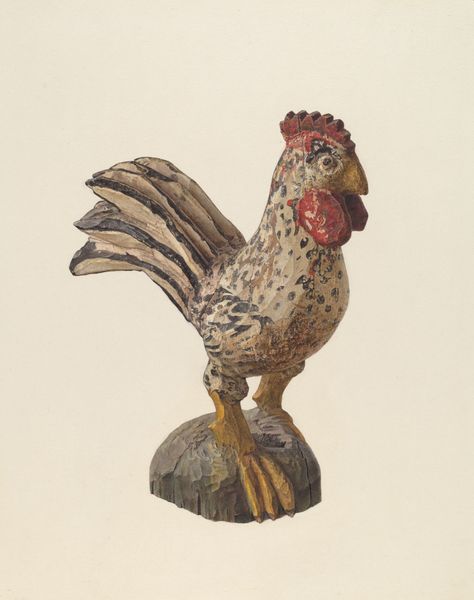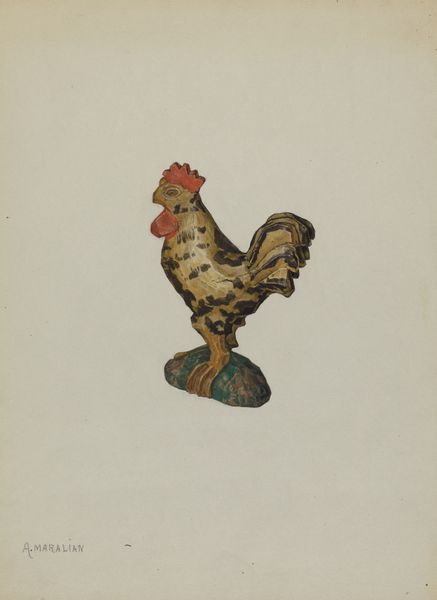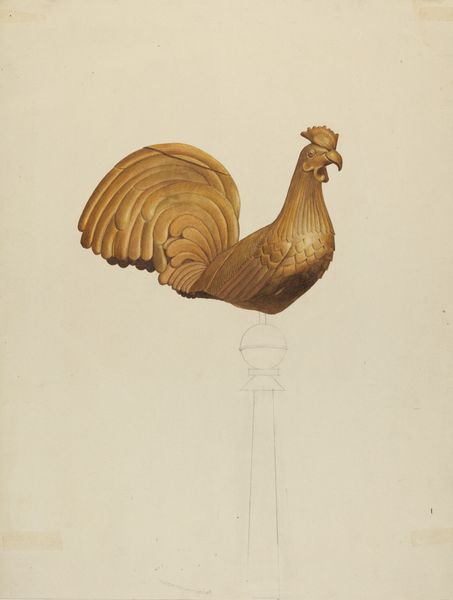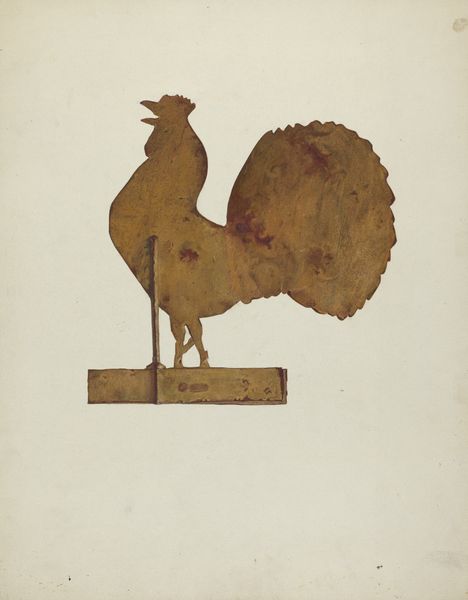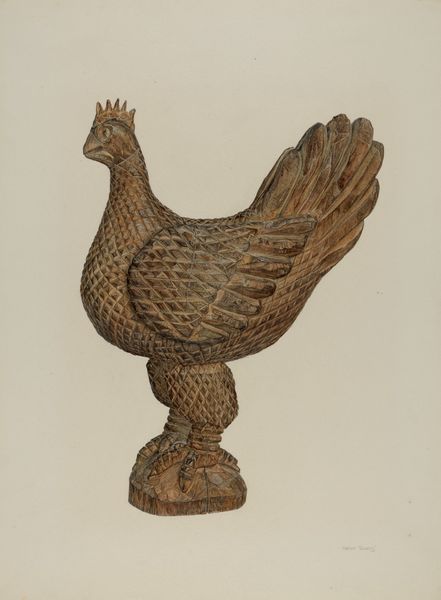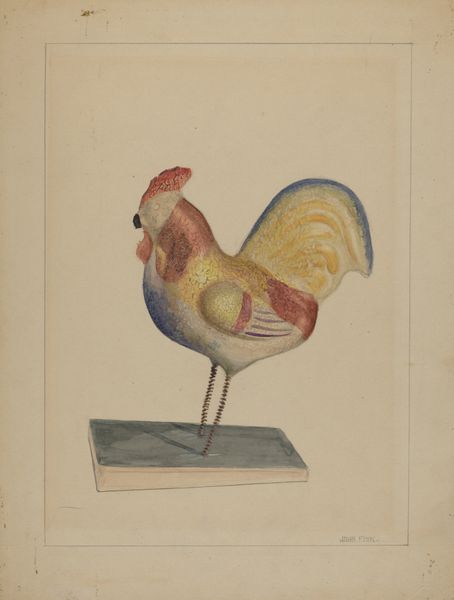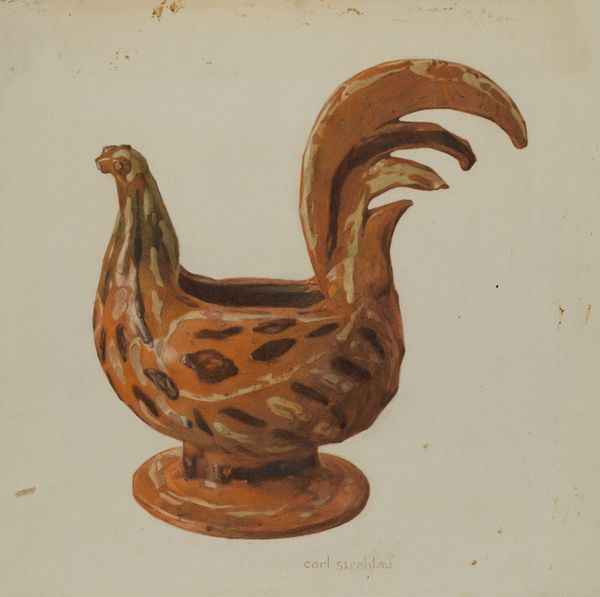
drawing, watercolor
#
drawing
#
figuration
#
watercolor
#
coloured pencil
#
folk-art
#
watercolor
Dimensions: overall: 37.2 x 27.5 cm (14 5/8 x 10 13/16 in.) Original IAD Object: 10 3/4" high; 10 1/4" wide; 2 3/4" deep
Copyright: National Gallery of Art: CC0 1.0
Curator: Let’s consider Beverly Chichester's circa 1941 drawing, “Pa. German Rooster Mantel Ornament," rendered in watercolor and colored pencil. What are your initial thoughts? Editor: The textures immediately strike me. It looks remarkably solid, like something cast, even though it’s lines and pigment on paper. The choice of browns and earthy greens give it weight. Curator: Roosters are, of course, age-old symbols. Across many cultures they represent vigilance, courage, even resurrection. Placed on a mantelpiece, a protective domestic spirit perhaps? Editor: Absolutely, but think about the materiality. A mantel ornament – probably plaster or carved wood in real life – now recreated on paper. The drawing itself becomes another layer of the object's history of replication. Curator: Chichester carefully depicts what appears to be sgraffito decoration on the base. Tiny, almost classical figures are suggested within abstract vines. It evokes folk-art traditions—connecting generations of craft. Editor: That's the core of it, isn't it? This artwork acts like an index, not simply presenting a rooster, but documenting, re-performing, this lineage of skill. Watercolor and pencil as tools to record and reify folk art. Curator: I wonder about its appeal during the 1940s in America? Perhaps a way of holding onto a past as the world was hurtling forward? An anchor in times of upheaval? Editor: Or perhaps a method of reclaiming tradition by circulating its representation as commodity or nostalgia. What's more American than the production and consumption of your past? Curator: Well, whether for preservation, or, as you suggest, for consumption, Chichester has offered us this enduring symbol – transformed once again through her very specific touch. Editor: It’s a beautiful piece. Its focus on documentation of crafted materials leads us to examine social continuities, while emphasizing the artist's unique role in recording material culture.
Comments
No comments
Be the first to comment and join the conversation on the ultimate creative platform.
